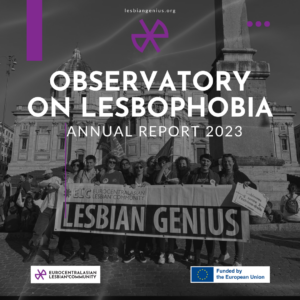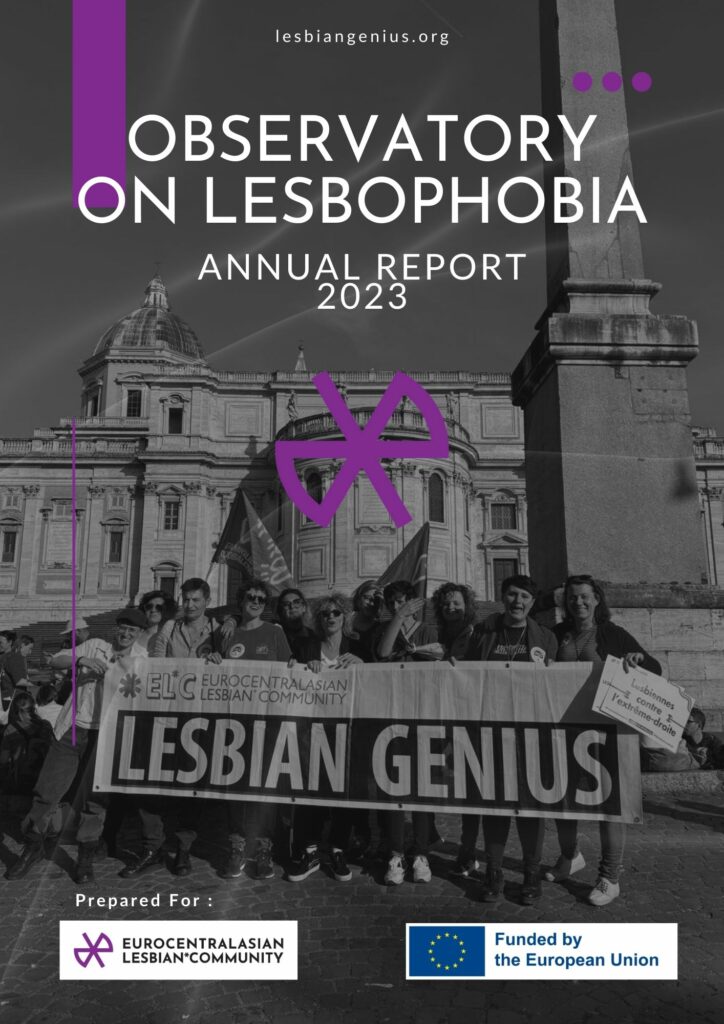The European Election’s Campaigns are about to start, and election periods being particularly challenging times for minorities, this edition’s focus has been set on violence against more visible lesbians (such as politicians, journalists, athletes, and human rights defenders) as well as lesbians’ representation in media.
This edition analyses cases of violence against lesbians collected in the past year ranging from violence based on gender expression, including cases of state-sponsored lesbophobia, such as the court cases against the recognition of lesbian mums in Italy.
While the visibility of lesbians is politically essential, it also constitutes an undeniable risk.
Because lesbophobia is a distinct form of discrimination and bias that encapsulates the misogyny and stigma directed towards non-heterosexual women, this report highlights some of the many forms it can take. It shows how thin the line can be from invisibility to harmful tropes in media and how easily lesbian identities can be used to further exclusionary agendas.
Today, during the 11th European IDAHOT+ Forum held by the Council of Europe and the Ministry of Education of the Netherlands in The Hague, EL*C Executive Co-Director Dragana Todorovic declared: “We lesbians know that silence will not protect us. Last month, we signed together with many other CSOs a Lesbian manifesto were we called for a true Union of Equality. Public authorities, researchers and journalists can do much more to fight lesbophobia and ensure diversity and freedom in our society.”
Read the full report:
-> Observatory on Lesbophobia
See also:
Observatory on Lesbophobia 2019-2022

